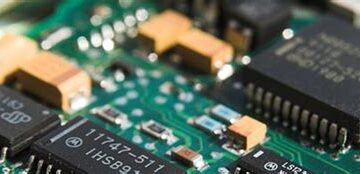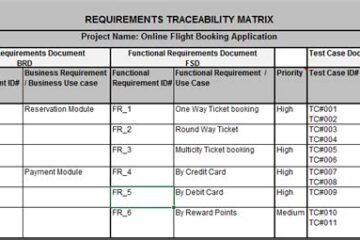What is Schematic Entry?
Schematic Entry is the process of creating a graphical representation of an electronic circuit using specialized software. The schematic diagram consists of symbols representing various electronic components, such as resistors, capacitors, transistors, and integrated circuits, connected by lines representing the electrical connections between them.
The primary purpose of Schematic Entry is to provide a clear and concise representation of the circuit design, which can be easily understood by engineers, technicians, and manufacturers. The schematic diagram serves as a blueprint for the physical layout of the circuit board and is used to generate other necessary files, such as netlists and bill of materials (BOM).
Tools and Techniques for Schematic Entry
There are several software tools available for Schematic Entry, ranging from free, open-source programs to expensive, high-end commercial packages. Some of the most popular Schematic Entry tools include:
- OrCAD Capture
- Altium Designer
- KiCad
- Eagle
- Multisim
These tools provide a user-friendly interface for creating and editing schematic diagrams, with features such as component libraries, design rule checks (DRC), and automatic generation of netlists and BOMs.
When creating a schematic diagram, it is essential to follow best practices and industry standards to ensure clarity and consistency. Some of these practices include:
- Using standard symbols for components
- Labeling components and nets clearly
- Organizing the schematic into logical blocks or hierarchies
- Applying consistent formatting and spacing
- Documenting the design with notes and comments
By adhering to these practices, the schematic diagram becomes a valuable communication tool for all stakeholders involved in the electronic design process.
Benefits of Outsourcing Schematic Entry Services
While some companies choose to perform Schematic Entry in-house, many others opt to outsource this task to specialized service providers. Outsourcing Schematic Entry Services offers several benefits, including:
-
Cost Savings: Outsourcing eliminates the need to invest in expensive software licenses, hardware, and training for in-house staff.
-
Time Savings: Service providers have experienced professionals who can complete Schematic Entry tasks quickly and efficiently, reducing the overall design cycle time.
-
Quality Assurance: Reputable service providers have strict quality control processes in place to ensure the accuracy and consistency of the schematic diagrams.
-
Flexibility: Outsourcing allows companies to scale their Schematic Entry needs up or down based on project requirements, without the need to maintain a large in-house team.
-
Access to Expertise: Service providers often have a wide range of experience across different industries and applications, which can be valuable for complex or specialized projects.
When choosing a Schematic Entry Service provider, it is important to consider factors such as their experience, reputation, communication skills, and pricing. Building a strong, long-term relationship with a reliable service provider can greatly enhance the efficiency and quality of the electronic design process.

Future Trends in Schematic Entry
As electronic systems continue to become more complex and integrated, Schematic Entry tools and techniques must evolve to keep pace with these changes. Some of the future trends in Schematic Entry include:
-
Integration with Other Design Tools: Schematic Entry tools are increasingly being integrated with other electronic design automation (EDA) tools, such as PCB layout and simulation software, to create seamless design flows and reduce errors.
-
Cloud-Based Collaboration: Cloud-based Schematic Entry tools allow teams to work together on designs remotely, enabling real-time collaboration and version control.
-
Artificial Intelligence and Machine Learning: AI and ML techniques are being applied to Schematic Entry to automate tasks, such as component selection and design rule checking, and to optimize designs for performance and manufacturability.
-
Virtual and Augmented Reality: VR and AR technologies are being explored as new interfaces for Schematic Entry, allowing designers to interact with schematic diagrams in immersive, three-dimensional environments.
By embracing these trends and technologies, companies can streamline their electronic design processes, reduce costs, and bring innovative products to market faster.
Schematic Entry Services Market
The global Schematic Entry Services market is expected to grow steadily in the coming years, driven by the increasing demand for electronic devices across various industries, such as consumer electronics, automotive, healthcare, and aerospace. The market is segmented based on factors such as service type, end-user industry, and geography.
Some of the key players in the Schematic Entry Services market include:
| Company | Headquarters | Services Offered |
|---|---|---|
| Axiom Electronics | India | Schematic Entry, PCB Design, Firmware Development |
| eInfochips | India | Schematic Entry, PCB Layout, Embedded Software |
| EMA Design Automation | United States | Schematic Entry, Library Management, Training |
| Nuvation Engineering | Canada | Schematic Entry, FPGA Design, Embedded Software |
| Tata Elxsi | India | Schematic Entry, PCB Design, Mechanical Design |
These companies offer a range of services to meet the diverse needs of their clients, from basic Schematic Entry to full turnkey electronic design services.
Conclusion
Schematic Entry is a vital step in the electronic design process, enabling the creation of clear, accurate, and consistent representations of electronic circuits. By outsourcing Schematic Entry Services to specialized providers, companies can reduce costs, save time, and ensure the quality of their designs.
As the demand for electronic devices continues to grow and technologies advance, Schematic Entry tools and techniques must adapt to meet these challenges. By staying abreast of the latest trends and best practices, electronic design professionals can deliver innovative, reliable, and cost-effective solutions to their clients.
Frequently Asked Questions (FAQ)
-
What is the difference between Schematic Entry and PCB Layout?
Schematic Entry focuses on creating a graphical representation of the electronic circuit, while PCB Layout involves designing the physical arrangement of components and traces on a printed circuit board. -
Can Schematic Entry be automated?
While some aspects of Schematic Entry can be automated, such as component placement and labeling, the overall process still requires human expertise and judgment to ensure the accuracy and functionality of the design. -
What are the benefits of using a component library in Schematic Entry?
Component libraries provide a standardized set of symbols and footprints for commonly used electronic components, saving time and ensuring consistency across designs. -
How can I ensure the quality of outsourced Schematic Entry Services?
To ensure quality, choose a reputable service provider with a proven track record, clearly communicate your requirements and expectations, and establish a robust quality control process with regular reviews and feedback. -
What skills are required for a Schematic Entry professional?
A Schematic Entry professional should have a strong understanding of electronic components and circuits, proficiency in Schematic Entry software tools, attention to detail, and excellent communication and collaboration skills.



0 Comments